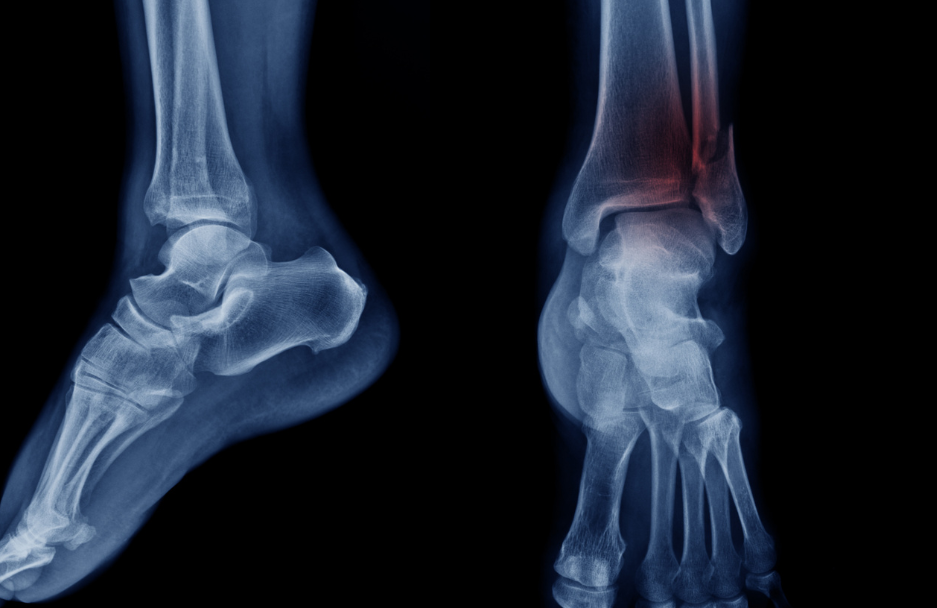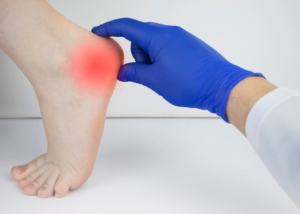Stress fractures make up over 10% of sports-related injuries, and up to 30% of all running injuries – making them a common problem among our patients here at Sole Motion. Stress fractures can be subtle and go easily undetected at first before progressively worsening, feeling very different from the instant and intense pain of their regular ‘bone break’ fracture counterpart.
While experienced sports people typically associate stress fractures with going “too hard, too fast” – which can undoubtedly be a contributing factor, the truth is that there’s a lot more to stress fractures than meets the eye. And there are some signs of being at a high risk of stress fractures, like missing periods, that most people aren’t aware of. So today we’ve shed the light on stress fractures, why they occur, what you should look for, and how to treat them so you can get back to living a pain-free life you love.
What Is A Stress Fracture?
When your bone cannot withstand the repetitive loading and stress that is applied to it, a stress fracture can occur. While we typically define stress fractures as very tiny hairline cracks that can progressively worsen over time, medical professionals sometimes use ‘stress fracture’ as an umbrella term to include stress reactions, such as the inflammation of the bone or the lining that surrounds the bone (called the periosteum).
Why Do Stress Fractures Occur?
It’s easy to think of our bones as one solid object that doesn’t change, but when we look at what is happening with our cells, our body is in a constant cycle of breaking down and rebuilding our bones, a process called ‘remodelling’. This involves borrowing from the calcium stores of our bones and giving back to them – which is why calcium is such a crucial part of our diet.
When our bones are being broken down and rebuilt at the same rate, we maintain our bone strength throughout the remodelling process. Our bones can also grow stronger if they are loaded through this process, like during exercise and muscle contractions that attach to the bone, with the body responding to the loading by rebuilding stronger bones that can handle the load we are regularly exposed to.
In order to build stronger bones – or even maintain our current bone strength and remodelling rate – our body has requirements. So it’s when these requirements aren’t met that our risk for a stress fracture increases.
The Surprising Causes Of Stress Fractures
Insufficient calories and energy
If you lead a physically active life, you need to be putting enough energy in to support both your exercise levels and your vital body functions. When active individuals people purposefully restrict the number of calories they eat, or get into poor eating habits and unintentionally skip meals, they often go on to develop a lower bone mass, reduced bone strength and altered bone metabolism (meaning more bone gets broken down than rebuilt during the remodelling processing), and this puts them at a higher risk of a stress fracture.
A 2018 study showed that having low energy availability while exercising for as little as five days can negatively affect the bone remodelling balance, while also having significant effects on long-term bone mass and fracture risk, too.
Hormone imbalances (leading to missed periods)
Women
Continuing on from the last point, when we have a low amount of energy available, our body can resort to using this energy for vital bodily functions and ignore non-vital processes like menstruation in women. Accordingly, as levels of hormones like estrogen and testosterone are reduced, this also impacts bone health and increases stress fracture risk due to the role of that sex hormones play in supporting good bone health.
Women that stop having regular menstrual cycles, which is defined as having less than nine cycles per year according to studies, have been shown to have lower bone strength, a greater risk of stress fractures, reduced bone mineral density and altered bone microarchitecture.
The relationship between lower energy, menstrual dysfunction and poor bone health is known as the female athlete triad, and we’ve written all about it here.
Men
While men don’t have to worry about missing periods, they can experience a similar condition called exercise-related hypogonadism, where there is insufficient testosterone being made which is an essential reproductive hormone. The result is decreased in bone mineral density and an increase in the risk of stress fractures.
Overloading the bones
Your bones are used to the load that is applied to them regularly, and remodel accordingly. When we go too hard too fast during sports (such as rapidly increasing training duration, frequency or weight), or expose our bones to loads that go above and beyond what they are used to safely handling, we increase our risk of stress fractures.
Poor lower limb biomechanics
Lower limb biomechanics is the way that our feet and legs (including bones, joints, muscles and tissues) work together to produce movement. Having certain biomechanical characteristics can increase our risk of stress fractures, particularly where it causes us to overload certain bones and joints.
Sleep and rest
During sleep and rest, our bones have a chance to recover. Having insufficient rest between bouts of exercise will not support a healthy rebuilding phase, and the bone may break down faster than the rate at which it is rebuilt. As such, insufficient sleep and repeated training sessions without adequate rest increase the risk of poor bone health and therefore fracture risk.
Nutritional deficits
Calcium and vitamin D are critical to maintain good bone health and support a healthy and balanced remodelling process. If there are deficits in either, there is a higher risk of stress fractures.
Stress Fractures Can Get Complicated: The Dreaded Black Line
If stress fractures are ignored, complications can arise. One of these complications is known as the dreaded black line, where a stress fracture in the shin bone progresses to a complete (or near-complete) fracture in a horizontal line across the bone.
The crack created in the shin bone shows up black on an x-ray and is ‘dreaded’ because it is more complicated to treat than a standard stress fracture and requires more effort than just giving the bone time to rest and heal while removing the source of the stress. In almost all cases, treatment will involve either removing all pressure from the leg using a moon boot or similar device, or surgically placing a rod through the bone to keep it connected, with the option of using a bone graft to stimulate healing. These ‘hard and fast’ treatment measures are needed as it is difficult for the body to create new bone to fill the gap naturally.
Treating Stress Fractures With Sole Motion
If you’re concerned about a stress fracture, our team at Sole Motion is here to help. We understand that stress fractures often aren’t as simple as just going too hard too fast, and instead are a multifaceted problem that needs a holistic and comprehensive approach to care so that key parts of treatment aren’t missed. We also understand that the risk factors for men and women can be very different – and an effective treatment plan must reflect this.
To book in with our experienced practitioners, call us on 1300 FX FEET, or book your appointment online here.





